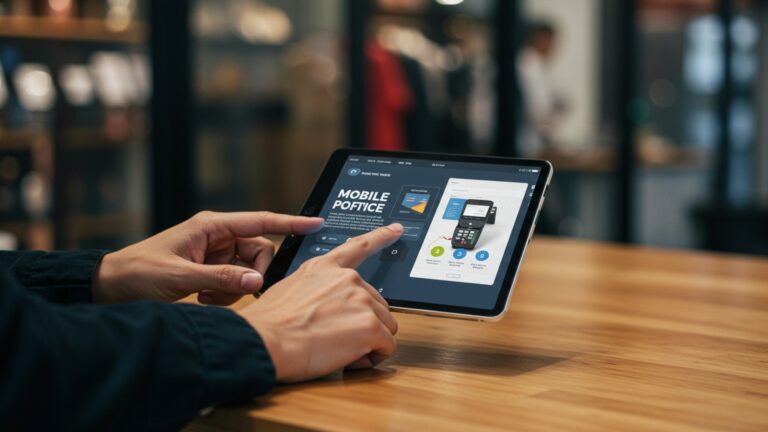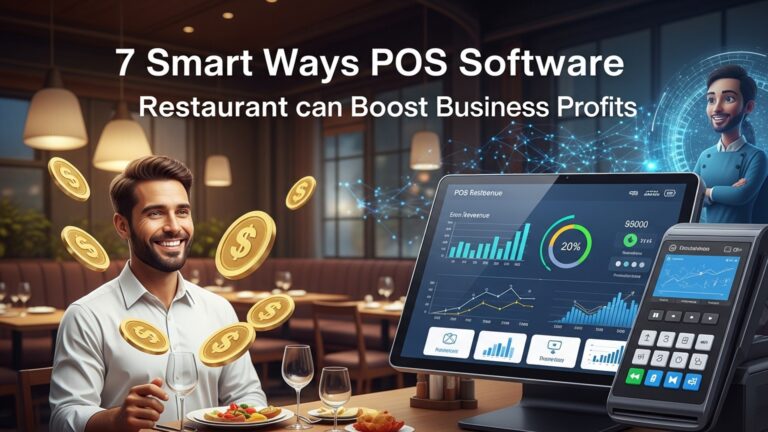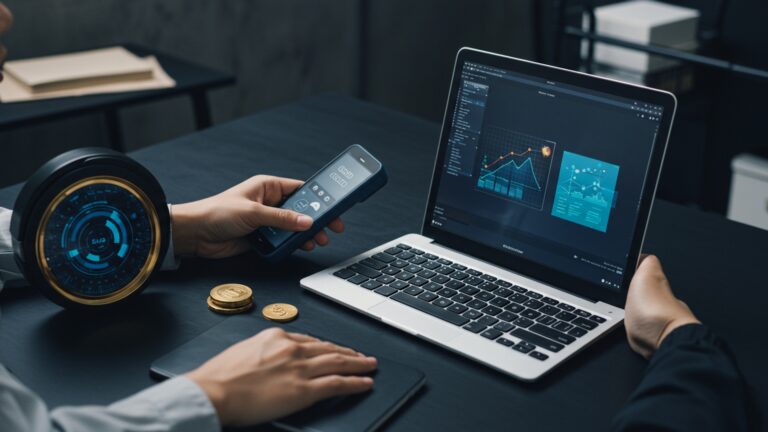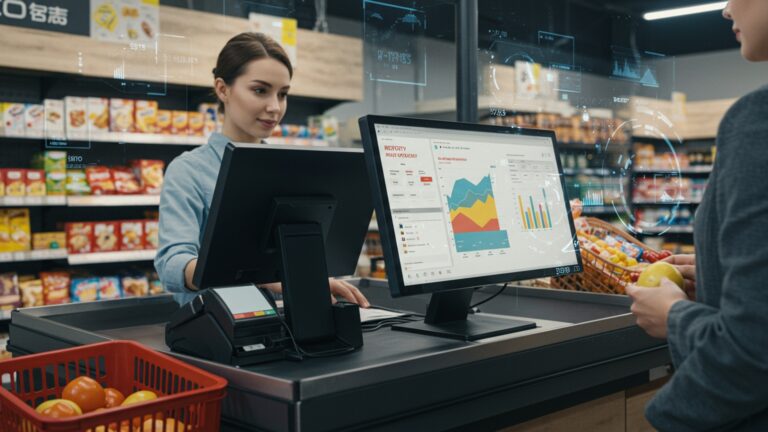How to Choose the Best Restaurant POS Software for Your Business
The modern restaurant operates in a rapidly evolving digital landscape, where merely processing transactions is no longer enough; your restaurant POS software must be the central nervous system powering every facet of the business. From optimizing tableside ordering with handheld devices to integrating seamlessly with third-party delivery platforms like DoorDash and Uber Eats, the right system enhances efficiency and boosts the customer experience. Businesses now demand robust features like AI-driven inventory management to minimize waste and real-time analytics for dynamic menu pricing, a stark contrast to the basic cash registers of yesteryear. Choosing the optimal solution today means evaluating cloud-native platforms that offer scalable infrastructure, ensuring your operations remain agile and competitive amidst shifting consumer expectations for speed and personalization.

Understanding the Core of Restaurant POS Software
At its heart, a Point-of-Sale (POS) system for restaurants is far more than just a cash register. It’s the central nervous system that orchestrates almost every operational aspect of a dining establishment. From the moment a customer places an order to the final payment, the restaurant POS software tracks, manages. streamlines the entire process. Historically, POS systems were hardware-centric, primarily designed for transaction processing. Today, modern restaurant POS software has evolved into sophisticated, integrated platforms that encompass front-of-house (FOH) and back-of-house (BOH) operations, providing critical data insights and enhancing the customer experience.
Key components typically include:
- Hardware
- Software
- Payment Processing
This can range from touch-screen terminals, kitchen display systems (KDS), receipt printers, cash drawers. barcode scanners, to handheld devices for tableside ordering.
The operating system and applications that power the hardware, managing everything from menu items and pricing to inventory, employee shifts. sales reporting.
Integration with secure payment gateways to handle credit cards, debit cards, mobile payments. gift cards, ensuring PCI DSS compliance.
Understanding this foundational role is the first step in appreciating the strategic importance of selecting the right restaurant POS software for your business.
The Critical Role of Robust Restaurant POS Software in Modern Operations
In today’s competitive culinary landscape, having a robust restaurant POS software solution is not merely a convenience; it’s a strategic imperative. The right system can dramatically improve operational efficiency, enhance customer satisfaction. provide invaluable data for informed decision-making. Businesses that invest wisely in their restaurant POS software often see tangible returns through:
- Increased Efficiency
- Enhanced Accuracy
- Superior Customer Experience
- Actionable Data Insights
- Reduced Waste and Theft
Streamlined order taking, direct communication with the kitchen (via KDS), faster payment processing. reduced manual errors save time and labor costs.
Precise order entry, inventory tracking. sales reporting minimize discrepancies and waste.
Faster service, accurate orders, personalized loyalty programs. diverse payment options contribute to happier patrons and repeat business.
Comprehensive reports on sales trends, peak hours, popular menu items. employee performance empower management to make data-driven decisions regarding staffing, menu engineering. marketing.
Accurate inventory management tracks every ingredient, reducing spoilage and preventing internal theft.
Ultimately, a well-chosen restaurant POS software transforms raw operational data into strategic assets, paving the way for sustainable growth and profitability.
Essential Features to Evaluate in Restaurant POS Software
When considering restaurant POS software, a comprehensive evaluation of its feature set is paramount. The ideal system will align perfectly with your unique operational needs, whether you run a fine dining establishment, a quick-service cafe, or a bustling food truck. Here are the critical features to scrutinize:
- Order Management
- Intuitive Interface
- Table Management
- Order Customization
- Kitchen Display System (KDS) Integration
- Inventory Management
- Real-time Tracking
- Recipe Management
- Vendor Management
- Waste Tracking
- Reporting & Analytics
- Sales Reports
- Labor Reports
- Menu Performance
- Customizable Reports
- Customer Relationship Management (CRM)
- Loyalty Programs
- Customer Profiles
- Gift Card Management
- Online Ordering & Delivery Integration
- First-Party Online Ordering
- Third-Party Delivery Platform Integration
- Employee Management
- Time Clock
- Role-Based Permissions
- Performance Tracking
- Payment Processing
- Multiple Payment Options
- Secure Transactions
- Split Payments
- Multi-Location Management
- For growing businesses, the ability to manage menus, inventory, pricing. reporting across multiple locations from a single dashboard.
Easy for staff to learn and use, minimizing training time.
Visual floor plans, table status tracking, seat numbering.
Support for modifiers, special requests, split checks. combining tables.
Digital order routing to the kitchen, reducing errors and improving speed.
Monitor ingredient levels, automatically deduct items as they’re sold.
Link menu items to specific ingredients and quantities to calculate costs and track usage.
Track suppliers, purchase orders. receiving.
Record spoiled or wasted items to improve accuracy.
Daily, weekly, monthly. yearly sales breakdowns by item, category. employee.
Track employee hours, sales per hour. labor cost percentages.
Identify best-selling and least-selling items, profit margins per dish.
Ability to generate specific reports tailored to your business needs.
Create and manage points-based or discount loyalty schemes.
Store customer preferences, order history. contact insights for personalized marketing.
Integrate with custom or third-party gift card solutions.
A branded online storefront integrated directly with your POS.
Seamlessly connect with services like DoorDash, Uber Eats, or Grubhub to consolidate orders.
Track clock-ins/outs, breaks. calculate hours for payroll.
Control staff access to specific POS functions (e. g. , discounts, voids, reports).
Monitor individual sales, tips. efficiency.
Support for credit/debit cards, EMV chips, NFC (Apple Pay, Google Pay), mobile payments. gift cards.
PCI DSS compliance is non-negotiable.
Easy splitting of checks by item or amount.
Deployment Models: Cloud-Based vs. On-Premise Restaurant POS Software
A crucial decision when selecting restaurant POS software is choosing between cloud-based and on-premise deployment models. Each has distinct advantages and disadvantages that can significantly impact your operational flexibility, cost structure. security posture.
| Feature | Cloud-Based Restaurant POS Software | On-Premise Restaurant POS Software |
|---|---|---|
| Accessibility | Accessible from any internet-connected device, anywhere. Ideal for remote management and multi-location businesses. | Typically accessible only within the restaurant’s local network. Remote access often requires specific VPN setups. |
| Cost Structure | Subscription-based (SaaS) with monthly/annual fees. Lower upfront cost, predictable operating expense. | High upfront cost for software licenses and hardware. Lower ongoing software fees. higher maintenance. |
| Maintenance & Updates | Managed by the vendor. Automatic updates, minimal IT burden for the restaurant. | Restaurant is responsible for maintenance, updates. troubleshooting. Requires in-house IT expertise or third-party support. |
| Data Storage | Data stored on vendor’s remote servers. Requires reliable internet connection. | Data stored locally on the restaurant’s servers. Can operate offline. local hardware is a single point of failure. |
| Security | Vendor is responsible for data security, backups. compliance (e. g. , PCI DSS). Often robust. relies on vendor’s practices. | Restaurant is solely responsible for data security, backups. compliance. Requires significant internal effort and expertise. |
| Scalability | Easily scalable; add users, locations, or features with a subscription upgrade. | Scaling may require significant hardware upgrades and additional software licenses. |
| Offline Capability | Many modern cloud systems offer “offline mode” to continue basic operations during internet outages, syncing data once connection is restored. | Fully functional without internet, as data is local. But, external integrations might be affected. |
Your choice should reflect your budget, technical capabilities, operational needs. future growth plans. Cloud-based solutions are generally favored by new businesses and those prioritizing flexibility and lower upfront costs, while on-premise systems might appeal to larger operations with specific customization needs and robust IT infrastructure.
Seamless Integration Capabilities
The true power of modern restaurant POS software lies not just in its individual features. in its ability to integrate seamlessly with other critical business systems. A disconnected set of tools leads to manual data entry, errors. inefficiencies. The best restaurant POS software acts as a hub, connecting various spoke systems to create a unified operational ecosystem.
Key integration areas include:
- Accounting Software
- Payroll Services
- Reservation Systems
- Marketing & Email Automation
- Third-Party Delivery Aggregators
- CRM & Loyalty Platforms
Sync sales data, payroll. inventory costs directly with platforms like QuickBooks, Xero, or Sage, reducing manual bookkeeping and improving financial accuracy.
Automatically transfer employee hours and tips for streamlined payroll processing.
Link with platforms like OpenTable or Resy to manage bookings and potentially track customer arrival times against POS data.
Use customer data collected through the POS (e. g. , loyalty program sign-ups) to power targeted email campaigns and promotions.
As mentioned, direct integration eliminates the need for multiple tablets and manual order entry from platforms like DoorDash, Uber Eats. Grubhub.
Deeper integrations can enrich customer profiles and power more sophisticated loyalty programs.
When evaluating integration capabilities, inquire about Application Programming Interfaces (APIs). A robust API allows your restaurant POS software to communicate programmatically with other applications, enabling automated data exchange and custom workflows. For instance, an API might allow a third-party online ordering system to push new orders directly into your POS, or for your POS to send daily sales summaries to your accounting software.
// Example of a hypothetical API endpoint for retrieving daily sales data
GET /api/v2/reports/sales? date=2023-10-27
Content-Type: application/json // Response might include:
{ "date": "2023-10-27", "total_sales": 1523. 50, "net_sales": 1400. 25, "tax_collected": 123. 25, "transactions_count": 85, "top_selling_items": [ {"item": "Signature Burger", "quantity": 30, "revenue": 450. 00}, {"item": "Craft Beer", "quantity": 45, "revenue": 315. 00} ]
}
This level of integration ensures data consistency, minimizes manual effort. provides a holistic view of your business performance.
Scalability and Future-Proofing Your Investment
Choosing restaurant POS software is a significant long-term investment. smart businesses plan for growth. The system you select today should be capable of supporting your operations not just now. five or ten years down the line. Consider the following aspects of scalability and future-proofing:
- Multi-Location Support
- Feature Expansion
- Transaction Volume
- Technology Updates
- API Accessibility
If you foresee opening additional restaurants, does the POS easily accommodate new locations, allowing centralized management of menus, inventory. reporting?
Can the system adapt if you decide to add new services, such as a full-service bar, catering, or a retail section selling merchandise? Does it offer modular add-ons?
Can the system handle increased transaction volume during peak seasons or as your customer base grows without performance degradation?
How often does the vendor release updates? Do they incorporate new technologies (e. g. , AI-driven insights, advanced mobile payment options)? A forward-thinking vendor ensures your restaurant POS software remains current and competitive.
A rich and well-documented API indicates a platform designed for future flexibility, allowing you to integrate with new technologies or build custom solutions as needs evolve.
A personal anecdote: “When ‘The Daily Grind Coffee Shop’ started, they chose a basic POS focused solely on quick transactions. As they expanded to three locations and introduced a loyalty program and online ordering, their initial system crumbled under the pressure. They had to scrap it entirely, losing valuable customer data and enduring a painful migration. This experience highlighted the critical need for a restaurant POS software solution that could grow with them, supporting multi-location inventory, advanced loyalty. seamless online integration from the outset.” This experience underscores the importance of anticipating future needs during the selection process.
Understanding the True Cost of Restaurant POS Software
The sticker price of restaurant POS software can be deceptive. To make a truly informed decision, you must consider the Total Cost of Ownership (TCO), which encompasses all expenses associated with acquiring, implementing. maintaining the system over its lifespan. Overlooking hidden costs can lead to budget overruns and dissatisfaction.
- Hardware Costs
- Software Licenses/Subscriptions
- On-Premise
- Cloud-Based
- Payment Processing Fees
- Installation & Setup
- Training
- Ongoing Support & Maintenance
- On-Premise
- Cloud-Based
- Integration Fees
- Data Migration
Terminals, tablets, KDS screens, printers, cash drawers, network equipment. These can be significant upfront expenses, though some vendors offer bundles or financing.
One-time perpetual license fee, often per terminal or location.
Monthly or annual subscription fees, typically per terminal or location.
These are often the largest ongoing cost. grasp the percentage per transaction, fixed fees, gateway fees. chargeback fees. Negotiate these carefully.
Costs associated with getting the system up and running, including cabling, network configuration. initial software setup.
Initial training for your staff on how to use the new system. Some vendors include this; others charge extra.
Annual maintenance contracts, potential IT support costs for troubleshooting.
Usually included in the subscription. check for premium support tiers.
Costs for integrating with third-party apps (accounting, online ordering, etc.). Some integrations are free; others require paid connectors or custom development.
If you’re switching from an old system, there might be costs associated with migrating existing customer or menu data.
Always request a detailed quote that breaks down all potential costs. Don’t be afraid to ask vendors about “hidden” fees or what’s not included in their standard package.
Vendor Support, Training. Community
Even the most advanced restaurant POS software is only as good as the support behind it. When things go wrong – a printer jams, a payment fails, or a new staff member needs help – reliable and responsive support is invaluable. Evaluate a vendor’s commitment to customer success through:
- Availability of Support
- Response Times
- Quality of Support
- Initial Training
- Ongoing Education
- Community & Resources
Is 24/7 support available, especially during peak restaurant hours (evenings, weekends)? What channels are offered (phone, email, chat, in-person)?
Inquire about guaranteed response times for critical issues. A system going down on a busy Friday night can be catastrophic.
Are support agents knowledgeable about restaurant operations, or do they simply follow scripts? Look for vendors with staff who interpret the urgency of restaurant-specific problems.
What onboarding and training resources are provided for your staff? Is it hands-on, online tutorials, or a combination? Effective training is crucial for rapid adoption and minimizing user errors.
Do they offer webinars, updated documentation, or a knowledge base for continuous learning?
A vibrant user community or online forum can be a great resource for tips, troubleshooting. sharing best practices.
Consider a scenario: It’s Saturday night, your busiest shift. your kitchen display system suddenly stops receiving orders. Without immediate, competent support, your entire operation could grind to a halt, leading to lost revenue and frustrated customers. Prioritizing a vendor with a strong track record of excellent customer support is an investment in your restaurant’s resilience.
Security and Compliance Considerations
In an age of increasing cyber threats and stringent data privacy regulations, the security and compliance of your restaurant POS software are non-negotiable. Handling sensitive customer payment insights and personal data requires robust protections.
- PCI DSS Compliance
- Data Encryption
- Access Control
- Backup and Disaster Recovery
- Data Privacy Regulations
- Network Security
This is paramount. The Payment Card Industry Data Security Standard (PCI DSS) is a set of security standards designed to ensure that all companies that process, store, or transmit credit card details maintain a secure environment. Your chosen restaurant POS software and payment processor must be PCI compliant.
Ensure that all sensitive data, both in transit (e. g. , between POS terminal and server) and at rest (stored on servers), is encrypted.
Implement robust role-based access control, ensuring employees only have access to the functions and data necessary for their roles. This prevents unauthorized voids, discounts, or access to sensitive reports.
Inquire about the vendor’s data backup strategy and disaster recovery plan. How often is data backed up? Where is it stored? How quickly can your system be restored in case of a major outage or data loss?
Be aware of regional data privacy laws like GDPR (Europe) or CCPA (California) if your restaurant serves international or specific state-based clientele. Your POS system should offer features to help you comply with requests regarding customer data.
While often outside the direct POS software, ensure your restaurant’s internal network (Wi-Fi, LAN) is secure and separate from guest Wi-Fi to protect your POS environment.
A breach of customer data or a failure to comply with payment standards can result in severe financial penalties, damage to your reputation. loss of customer trust. Prioritize vendors who demonstrate a clear commitment to security and provide transparency about their compliance measures.
A Structured Approach to Selection and Implementation
Choosing and implementing new restaurant POS software is a significant project. A structured approach can minimize disruption, ensure a smooth transition. maximize the return on your investment.
- Conduct a Thorough Needs Assessment
- Document your current challenges (e. g. , slow service, inventory issues, lack of reporting).
- List essential features you absolutely cannot live without.
- Identify “nice-to-have” features for future growth.
- Involve key stakeholders: FOH staff, BOH staff, managers. ownership.
- Research and Shortlist Vendors
- Based on your needs, research vendors known for their restaurant POS software. Look at industry reviews, testimonials. case studies.
- Aim for a shortlist of 3-5 vendors that seem to align best with your requirements.
- Request Detailed Demos
- Schedule personalized demonstrations with each shortlisted vendor.
- Have specific scenarios prepared (e. g. , “Show me how to split a check,” “How do I add a new menu item with modifiers?”) .
- Involve relevant staff in these demos to get their input.
- Check References and Read Reviews
- Ask vendors for references from similar restaurant types.
- Look at independent review sites to get unbiased opinions on features, support. reliability.
- Evaluate Pricing and Total Cost of Ownership (TCO)
- Get comprehensive quotes including all hardware, software, installation, training. ongoing fees.
- Compare the TCO over 3-5 years, not just the upfront cost.
- Negotiate and Finalize Contract
- Don’t be afraid to negotiate on pricing, terms. included services.
- Read the contract carefully, paying attention to cancellation policies, support level agreements (SLAs). data ownership.
- Plan for Implementation and Staff Training
- Develop a detailed implementation timeline.
- Schedule comprehensive training sessions for all staff members who will interact with the new restaurant POS software. Hands-on practice is crucial.
- Consider a “soft launch” period or running the old and new systems in parallel for a short time.
- Post-Implementation Review
- After launch, gather feedback from staff and customers.
- Monitor key performance indicators (KPIs) to ensure the system is delivering expected benefits.
- Address any issues promptly and leverage vendor support.
Consider the case of “Gourmet Bites Bistro,” a mid-sized restaurant that had outgrown its legacy system. They adopted this structured approach. Their needs assessment identified a crucial requirement for advanced inventory control and integrated online ordering. Through demos, they discovered a cloud-based restaurant POS software that not only met these needs but also offered robust CRM for their budding loyalty program. After meticulous staff training and a phased rollout, Gourmet Bites Bistro saw a 20% reduction in food waste and a 10% increase in online orders within the first quarter, proving the value of a thoughtful selection and implementation process.
Conclusion
Choosing the ideal restaurant POS software is not merely a purchase; it’s a strategic investment in your establishment’s future. My personal tip is to look beyond the flashy features and truly assess how a system integrates with your specific operational flow, from seamless table management during a bustling Friday night service to efficient online order routing. Consider current trends like QR code ordering and integrated loyalty programs, which significantly enhance customer experience and streamline staff duties. This isn’t just about processing payments; it’s about optimizing every touchpoint. Remember, the right POS transforms challenges into opportunities. I once observed a local cafe dramatically cut its order fulfillment time by 20% simply by adopting a cloud-based system with integrated kitchen display screens, making their operations far smoother. Don’t be afraid to demand comprehensive demos and ask tough questions about scalability and support. Your chosen system should evolve with you, perhaps even leveraging nascent AI analytics for predictive ordering. Invest wisely. watch your restaurant thrive, becoming a testament to modern efficiency. For further insights into business technology, consider consulting resources like Business News Daily’s tech section.
More Articles
Mastering Cloud Based POS Software How to Boost Your Business Efficiency
7 Essential Tips to Choose the Best Restaurant POS Software in India
How to Select the Perfect POS Software for Your Retail Business Needs
Discover 10 Key Advantages of Restaurant Billing Software India
How to Set Up Cloud Based POS Software for Business Growth
FAQs
What are the absolute must-have features I should look for in restaurant POS software?
When scouting for POS software, prioritize core functionalities like order management (for dine-in, takeout. delivery), real-time inventory tracking, staff management (time clocks, permissions), robust reporting. integrated payment processing. Features like kitchen display systems (KDS) and online ordering integration are also incredibly useful.
How much should I expect to pay. are there hidden costs?
POS pricing can be a mixed bag. You’ll typically encounter monthly or annual subscription fees, transaction processing fees. sometimes initial setup costs. Always dig deep to uncover potential extra charges for hardware, ongoing support, or specific integrations. Get a crystal-clear breakdown of all potential expenses upfront.
Will my staff actually be able to figure this thing out quickly?
User-friendliness is a huge deal! Look for a system with an intuitive interface that’s easy to navigate, even for new hires. Good training resources, video tutorials. responsive customer support can significantly shorten the learning curve for your team.
Can this POS software play nice with my other restaurant systems, like accounting or online ordering?
Compatibility is super crucial to avoid headaches. Make sure the POS integrates smoothly with your existing accounting software, online ordering platforms, loyalty programs. reservation systems. Seamless integration saves you time and prevents data entry errors across different platforms.
What kind of help can I expect if something goes wrong or I have a question?
Reliable customer support is non-negotiable. Look for vendors offering 24/7 support via phone, chat, or email. Check their typical response times and if they provide on-site assistance or dedicated account managers. You want solid help available exactly when you need it most.
My business might grow; will this POS system grow with me?
Absolutely consider scalability! Choose a system that can comfortably handle increased order volume, additional locations. new features as your business expands. Cloud-based systems often offer more flexibility and easier upgrades for future growth compared to traditional on-premise solutions.
Do I need special hardware, or can I use what I already have?
Some modern POS systems are hardware-agnostic, meaning they’ll work with standard tablets or existing computers, which can save you a bundle. Others might require specific, proprietary hardware. Always verify the compatibility requirements for printers, cash drawers. card readers before making a commitment.






